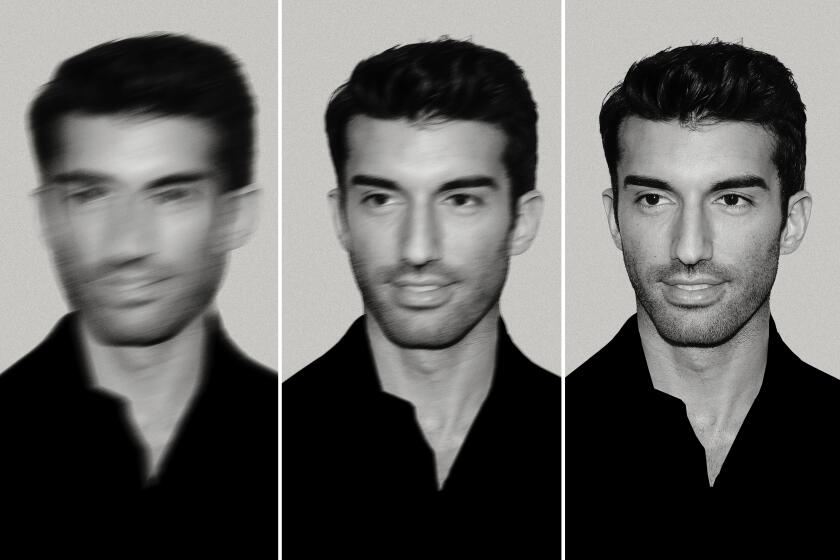A Reel Success Story : For Richard Grant of Capistrano Valley High, It Was Lights, Camera . . . College Scholarship
- Share via
It has no title and no special effects, and it lasts a mere four minutes. But a film produced, directed and edited by Richard Grant of Capistrano Valley High School helped its maker win the award he wanted--a college football scholarship.
Seen from Berkeley, Calif., to Tuscaloosa, Ala., Grant’s highlight film did what telephone calls, letters and patience could not.
It gave Grant the edge to convince the University of North Alabama that he was a catch to be signed.
His is a story perfect for a theme paper for Marketing 101.
“We liked what we saw on film,” said Wayne Grubb, coach at the University of North Alabama in Florence. “We liked his aggressiveness, his hitting ability and his speed. The film was the only thing to engage us on. We wouldn’t have gone (offered the scholarship) without it.”
Seven months ago, Grant lay on the Capistrano Valley football field, his knee torn, twisted and throbbing from an overzealous practice tackle.
The knee’s pop and crack translated into torn cartilage and a severe sprain. For Grant, a wide receiver and defensive back, those sounds soon turned to nightmares.
Trainers said proper healing might take weeks, even months. Doctors suggested arthroscopic surgery. Coach Dick Enright told Grant not to worry, that he would be in top form soon.
Grant tried not to panic as he watched his knee swell.
Like many seniors, Grant wanted his final season to be nothing less than tremendous. He wanted record-breaking statistics, touchdown glories and--most of all--plenty of scholarship offers.
A fine junior season had pointed to that. Grant had 33 catches for 534 yards and 2 touchdowns in 12 games. And college scouts took note.
Grant received letters and calls from Cal, Wyoming, Utah State, Weber State and others stating they were impressed with his performances and they looked forward to seeing him as a senior.
But a year later, scouts were watching junior quarterback Todd Marinovich and wide receiver Brent Parker. These were the strong, healthy, fast and talented players. In other words, scholarship candidates.
“Richard looked better than Brent Parker all summer,” said Ray Panici, Capistrano Valley offensive coordinator. “He would have been the best receiver in Orange County, I think, by far.”
Grant played in only nine games, catching 28 passes for 480 yards without a touchdown.
While the Cougars practiced, Grant underwent daily physical therapy--having his knee iced, heated and massaged--at an Irvine sports rehabilitation center. The therapy stabilized the knee, but Grant still felt its condition was shaky.
“I never got to the point where I could say, ‘This thing is fine. I’m going to be OK,’ ” Grant said. “I tried to tell myself I could run, or jump to catch, but it wouldn’t work. Frustration was the worst part.”
Coaches from Utah State, Weber State, Wyoming and Cal called Grant once a week or so, but none were interested enough to offer a scholarship.
“Some would say ‘Oh, we might fly you out next week,’ but they never did,” Grant said. “Sometimes it seemed they didn’t even know what they were doing. That bothered me.”
It bothered Enright and Panici, too. They encouraged Grant to promote himself with a highlight film.
As Grant found out, many coaches dislike highlight films.
“We don’t look at a lot, to be honest,” said Steve Mariuchi, recruiting coordinator at Cal. “We look at complete-game films. We want to see how many times they drop a ball or miss a pass. A receiver could be hiding 25 drops for the 10 catches we see.”
Said Gene McKeon, offensive line coach at Utah State: “We’ll look at anywhere from 200 to 400 of these films a year, but it’s not realistic. You only see their best foot forward all the time. The biggest thing it does is show that the person has a serious interest in the school.”
But Grant said he believed there was no other way.
For two weeks, aided only by a pamphlet on splicing film, Grant studied, cut, and worked his way through two seasons’ worth of game film--21 games--stored in a closet-sized film room at Capistrano Valley. All the right moves were included--blocking, tackling, receiving, intercepting and sprinting for the goal line.
He mailed the film to nine colleges. For the most part, the film was returned and Grant was thanked for his effort. Some coaches had already crossed Grant’s name from their list, others had already signed their limit of recruits.
“The highlight film was a valuable tool in Richard’s circumstance,” Mariuchi said. “But for us, the SMU deal (Southern Methodist University having its 1987 season canceled by the NCAA, thus allowing its players to transfer without sitting out) was a factor. We were searching for a receiver and went looking there. Richard was a good kid. He came from a nice family and was a hard worker, fast, strong and well-built. But we decided not to offer him (a scholarship).”
But someone did.
Grant said he’s looking forward to returning to the South. He lived in Albany, Ga.,--only a five-hour drive from North Alabama’s campus--until he was 8.
Now he’s trying to get himself in the best shape possible, including daily speed workouts with Capistrano Valley’s track team. Thursday, Grant set a school record (22.4) for the 200 meters against El Toro.
“I’m feeling real good about things now,” he said. “I’m happy the way it turned out, and I learned a lot. Like when you’re frustrated, you have to keep going. You gotta believe you can get there.”
Might make a wonderful movie.
More to Read
Only good movies
Get the Indie Focus newsletter, Mark Olsen's weekly guide to the world of cinema.
You may occasionally receive promotional content from the Los Angeles Times.









